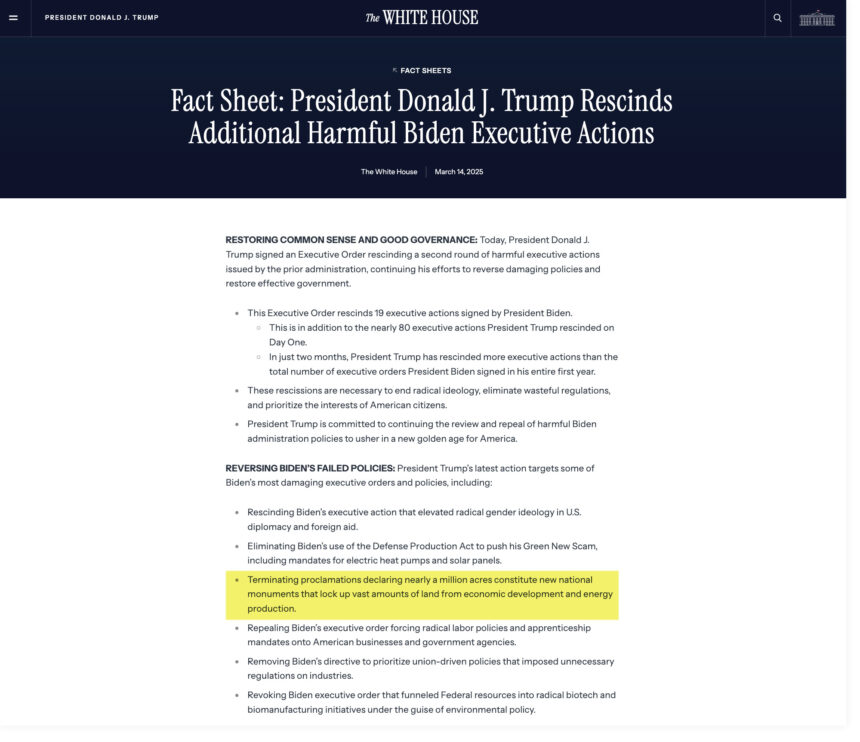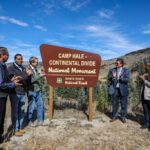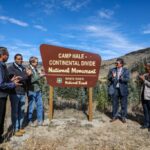Legal Authority and Changes to National Monuments
During his presidency, President Joe Biden established ten new national monuments, notably the Camp Hale Continental National Monument located in Colorado’s White River National Forest. Contrarily, the administration of former President Donald Trump appears to be preparing to reverse some of these designations, although specific targets remain unspecified.
On June 10, the U.S. Department of Justice sent ripples through legal circles by releasing an opinion asserting that President Trump has the authority to rescind national monuments—a stance that diverges from an 87-year interpretation of the Antiquities Act. This 1906 legislation allows presidents to designate national monuments to preserve significant historical and scientific landmarks. Since the Act’s inception with President Theodore Roosevelt’s establishment of Devils Tower in Wyoming, all but three U.S. presidents have invoked it to designate or expand over 160 national monuments, including nine in Colorado.
Potential Targets and Rationale
Mark Squillace, a natural resources law professor at the University of Colorado Boulder, believes this new interpretation represents a strategic positioning by the Trump administration in anticipation of repealing Biden-era monuments and possibly those established during the Clinton and Obama administrations. Early reports indicate potential reductions focusing on monuments located in California, such as Chuckwalla and Sáttítla Highlands, which were designated shortly before Biden took office.
Specifically, the list of six national monuments targeted by the Trump administration includes:
- Chuckwalla National Monument (California)
- Baaj Nwaavjo I’tah Kukveni (Arizona)
- Ironwood Forest (Arizona)
- Bears Ears (Utah)
- Grand Staircase (Utah)
- Organ Mountains-Desert Peaks (New Mexico)
The Camp Hale national monument, designated in October 2022, could also be at risk. This site was historically significant as a training base for the 10th Mountain Division during World War II and is backed by strong public opinion in favor of its preservation.
Public Sentiment on National Monuments
Public land advocacy groups have voiced strong opposition to changes proposed by the Trump administration. A recent survey conducted by the 2025 Conservation in the West Poll showed that 92% of Coloradans support maintaining national monument designations from the past decade, a sentiment echoed across the western United States, with 89% in favor of preserving such areas.
The Mountain Pact, an advocacy group based in Durango, stated, “Fifty dense pages from the Trump Administration’s Justice Department attempting to rewrite history will not change the overwhelming support Americans have for national monuments.”
Legal Opinions and Future Implications
The Justice Department’s recent opinion, authored by Lanora Pettit, deputy assistant attorney general, argues that presidents possess the power to modify or rescind national monuments. Pettit contends that the Antiquities Act has been misapplied, allowing presidents to restrict public land indiscriminately. This is in stark contrast to the 1938 interpretation, which stated that the Act does not permit the removal of national monuments.
Historical precedent indicates that presidents have infrequently diminished national monuments. Notable past actions include reductions by Presidents Wilson and Eisenhower. Trump’s administration previously attempted to alter national monuments, notably in Utah, leading to ongoing legal disputes that Biden has since sought to address by reinstating protections.
Legal Table: Notable National Monuments
| Monument Name | State | Coverage Area (acres) | Designation Date |
|---|---|---|---|
| Camp Hale-Continental Divide | Colorado | 53,804 | October 2022 |
| Bears Ears | Utah | 1,351,849 | December 2016 |
| Grand Staircase | Utah | 1,880,461 | September 1996 |
As the debate surrounding national monuments continues, any moves by the Trump administration are likely to face substantial legal challenges. Squillace anticipates that litigation will ensue, potentially impacting the protections laid out by the Antiquities Act for years to come.














